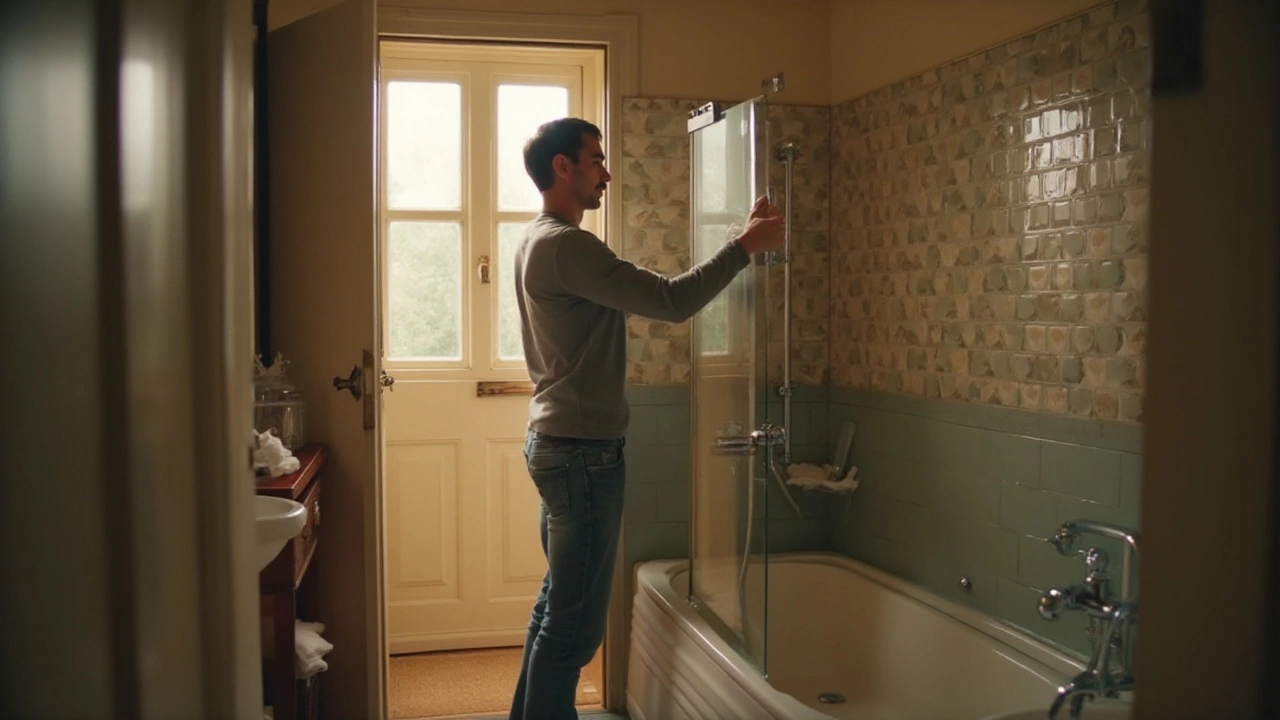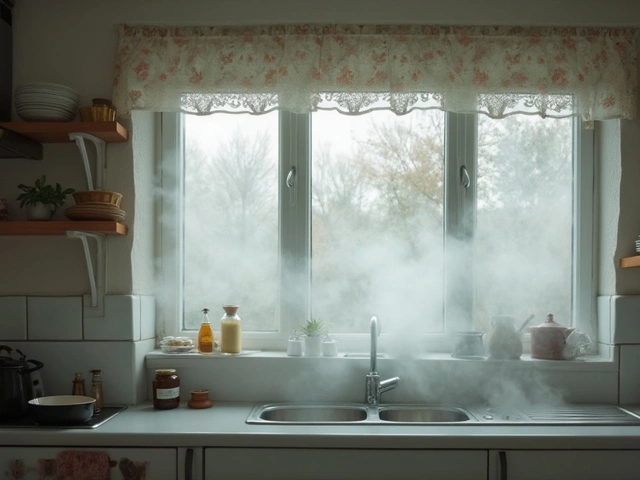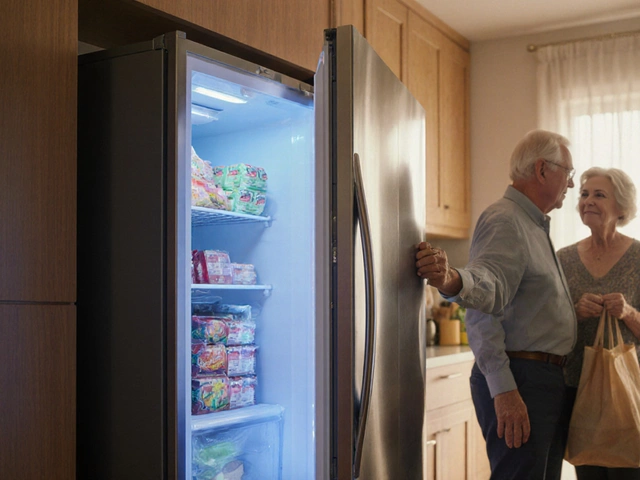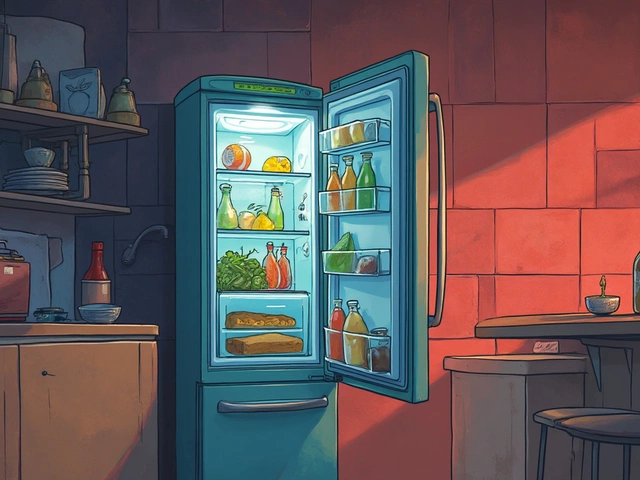The mystery of why your shower lacks hot water while the rest of the house remains unfazed can leave you scratching your head in frustration. But don't worry, this is a problem with a set of straightforward solutions. The issue typically boils down to a handful of likely culprits, each with its symptoms and solutions.
We're here to guide you through those potential causes, starting with a look at your plumbing system. We'll cover the inner workings of your shower valves and peek into the possible quirks of your water heater itself. Along the way, we'll sprinkle in a few tips to help you tackle minor glitches before they become major headaches. So, roll up your sleeves and let's bring back the steamy showers you deserve.
- Common Causes of Shower Hot Water Issues
- Checking and Repairing Shower Valves
- Inspecting Your Water Heater
- DIY Solutions for Immediate Fixes
- When to Call a Professional Plumber
Common Causes of Shower Hot Water Issues
If you find yourself stepping into a shower that's lacking that coveted hot water, you're likely facing one of several commonplace culprits. A frequent issue centers around the shower valve itself. Often, homeowners unwittingly overlook this component, which plays a critical role in mixing cold and hot water to deliver the perfect balance. Age, hard water deposits, or just regular wear and tear can disrupt this delicate balance, culminating in a tepid shower experience.
Another potential player behind your shower’s tepid performance is the water heater. A water heater set at a lower temperature than desired or suffering from sediment build-up can result in insufficiently heated water. It’s a household creature of habit and requires regular maintenance to keep performing optimally. Without it, you might face showers that run cold just as often as they run hot. Experts stress the importance of flushing your water heater once a year to avoid such woes.
"Annual maintenance on your water heater can extend its life by several years while keeping your water hotter," advises the Home Water Heating Association.
Additionally, if other faucets in your home flow with inviting warmth, it narrows the issue to likely being your shower system itself. In some cases, the problem may not be the hardware but rather an inconsistency in your home's plumbing. Corroded pipes, or even a poorly designed layout, can hinder the delivery of hot water specifically to your shower, while the rest of the house indulges in warmth. The complexity of plumbing systems can thus be the unsung villain of your lukewarm encounter.
Lastly, consider the mixing valve within the shower fixture. Designed to prevent scalding by balancing the hot and cold water, a faulty mixing valve can inadvertently block steaminess from entering the fray. This requires an insightful inspection to either adjust or replace the device. Plumbing specialists often cite this as a common oversight amidst homeowners attempting a DIY fix. Don’t hesitate to reach out for professional assistance if these attempts don't yield satisfactory results.
Checking and Repairing Shower Valves
When your shower runs cold, it's tempting to point fingers at the hot water heater, but there's a good chance the culprit nestles closer to the tap. The shower valve is often the unsung hero in this tale, controlling the blend of hot and cold water that pours from your showerhead. A malfunctioning valve can upset that balance, leading to tepid showers that leave you shivering rather than steaming and singing. Getting to grips with these valves is crucial.
Begin by understanding the type of valve your shower uses. Commonly, you'll encounter pressure-balancing valves, thermostatic valves, and diverter valves, each with its quirks and potential pitfalls. A pressure-balancing valve compensates for changes in water pressure, crucial in preventing those sudden bursts of arctic temperatures when someone flushes a toilet elsewhere in your house. If you notice these fluctuations, the pressure-balancing valve might need an adjustment or replacement. A common symptom with thermostatic valves is an inability to maintain a consistent water temperature, which usually signals the interior cartridge is due for a cleanup or swap-out.
Tackling a valve repair starts with removing the shower handle, usually a task for a screwdriver. Once exposed, you can access the cartridge, the heart of the valve's mechanisms, responsible for maintaining temperature equilibrium. Look for any visible signs of wear and tear or mineral deposit buildup which can often be scrubbed away to restore function. If cleaning doesn't solve the problem, replacing the cartridge might prove necessary—a straightforward task with significant results. Remember, though, precision is vital when inserting the new piece, as an ill-fitted part can lead to leaks or continued shower woes.
For the more visually inclined, it's helpful to have step-by-step diagrams or videos on standby; even seasoned DIYers relish an extra layer of visual guidance. Shower repair videos are plentiful on platforms like YouTube, illustrating the careful steps needed for handling each type of valve. If replacing or repairing the valve doesn't resolve the issue, check for blockages or irregular wear in the plumbing adjacent to the valve. A handheld mirror or even a flexible camera can let you peer into the nooks and crannies where problems like corrosion or sediment might lurk unseen.
"Prevention is better than cure," says a seasoned plumber from Seattle, "It might be tedious, but regular valve checks and maintenance work wonders."
Remember to switch off the water supply before you kick-off operation valve inspection to avoid an unplanned indoor deluge, which, while entirely preventable, remains an occupational hazard. Ensure you label screws and other tiny components removed during disassembly—trust me, retracing your steps without a proverbial map can add unnecessary stress to the process. Should your work leave you staring quizzically at a pile of spare parts, never hesitate to dial a professional; it might save time—and possibly your entire water system— in the end.
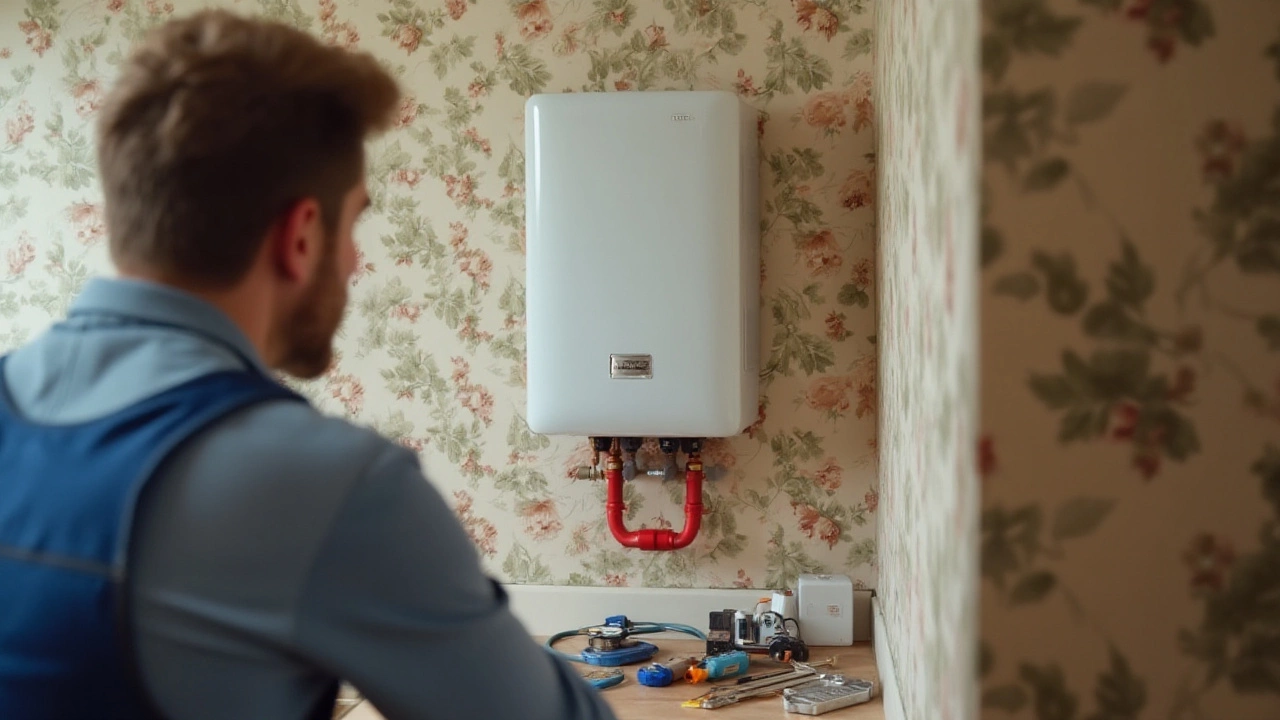
Inspecting Your Water Heater
When the hot water in your shower decides to take an unexpected vacation, it's often wise to start your investigation at the heart of any plumbing system—the water heater. Whether you own a tankless unit or a traditional storage tank model, these mechanical marvels require occasional attention to ensure a consistent flow of heated water, especially to your shower. If your assurances that someone else always falters never happened, well, your water heater could be the culprit this time. Begin by checking the thermostat settings on the water heater. Most units have a dial that controls this, and it can sometimes get nudged out of its usual position, especially if the heater's located in a busy area of your home. Make sure it's set to a temperature high enough to provide the comfort you desire.
A common issue could be sediment build-up within the tank itself. Over time, minerals from hard water can accumulate at the bottom of the tank, forming a thick layer that acts as a barrier to heat transfer. This not only reduces heating efficiency but might also lead to spots in your shower where hot water is elusive. Flushing the tank is a potential DIY fix for this situation. Connecting a garden hose to the drain valve and letting the tank empty and refill can remove this sediment, breathing new life into its efficiency. While flushing, keep an eye out for any unusual noises, like a rumble or pop—these can signal the presence of sediment.
Time often becomes the foe of the once-reliable water heater. Parts such as heating elements in electric models or thermocouples in gas units may simply wear out with age. Replacement is sometimes the only solution. Even so, these repairs typically involve some complexity and should be weighed against the possible benefits of purchasing a new, more energy-efficient unit. Consider consulting the water heater's manual, or perhaps bring in a professional for a thorough inspection.
According to the U.S. Department of Energy, water heating is the second largest expense in households, accounting for about 18% of utility bills, which highlights the importance of proper maintenance. Keeping the water heater in top condition is not just about comfort; it can impact financial bottom lines and environmental footprints. Of course, how do you maintain such a behemoth? Well, reading up is important, but scheduling regular check-ups with an experienced technician can keep troublesome issues at bay. They can perform water heater-specific maintenance tasks that might fall out of the typical homeowner's comfort zone.
In some situations, electric heaters could be tripping a breaker due to a fault in the system. Before you plunge into any great DIY endeavor, ensure that the power supply is functioning correctly. Just because a fuse box looks okay doesn't always mean it's actually supporting your efforts—think of it as a strong, silent type that only speaks up when prompted.
"A well-maintained water heater can serve a household efficiently for up to 15 years," says Tommy Callahan, a long-time plumber with expertise in residential and commercial systems. "The key is understanding what your system needs and keeping up with regular inspections," he emphasizes.
Lastly, the size of your water heater must match your household's hot water demand. If your family has grown or your requirements have increased, your existing unit might not manage the load efficiently anymore. In which case, it can sometimes seem like you've done everything right, only for an undersized heater to still let you down in the shower department. Planning a switch to a larger capacity heater might be the smartest move long-term.
DIY Solutions for Immediate Fixes
Fixing your shower hot water issue by yourself can seem daunting, especially if you have no prior experience with plumbing. However, you might be surprised to learn that many causes behind this problem can be tackled with some simple DIY solutions. If you're willing to roll up your sleeves and get a little hands-on, these practical steps can help you pinpoint the problem. Remember, safety is paramount, so always ensure you've turned off any necessary water supplies or electricity before starting your repair journey.
Let’s start with one of the most frequent culprits: the shower's mixing valve. This small component controls the temperature by blending hot and cold water, and when it malfunctions, it often disrupts the hot water flow to that specific outlet. First, ensure the valve is set to a hot setting. Often, the solution might be as simple as adjusting the valve's temperature limits, which restrict how hot your shower can get. Remove the valve's faceplate and, using a screwdriver, gently turn the adjustment screw. A minor tweak might restore your hot luxuriant showers. It is wise to know that constantly fluctuating temperatures might suggest it’s best to replace the valve altogether. Experts suggest that such repairs are manageable for home DIY enthusiasts with basic tools and patience.
An often-overlooked area is the water heater itself. Check if the setting on the heater thermostat is adequately high to supply hot water to your shower. Sometimes, the thermostat may unintentionally reset to a lower temperature. On older models, sediment buildup in the tank can create isolation between the water and the heating elements, causing inefficiency. If you’re comfortable, carefully flushing the tank to remove sediment once or twice a year not only can resolve the heat discrepancy but also prolongs the life of your heater. A word of caution: ensure you follow all guidelines from your water heater's manual, as incorrect handling can cause significant damage or injury.
"Many homeowners overlook the basics when it comes to heating discrepancies. They get tangled in the complexity rather than starting with a straightforward checklist,” - John Wilcox, a renowned plumbing expert.
Consider the supply lines as another spot to investigate. Ingeniously, many homes have separate lines for different faucets, and issues such as clogs or partial blockages may localize hot water problems. Start by checking for leaks or drips in your showerhead or nearby piping. Leaks can lead to reduced pressure and mixed water temperatures. Disconnect the showerhead and let hot water run for a couple of minutes. If hot water flows from the pipe, the issue likely lies within the showerhead itself — cleaning it or replacing it might solve your dilemma. Use a wrench, pipe tape, and a bit of elbow grease to ensure a firm but not overly tight fit when reinstalling.
Ultimately, armed with a little knowledge, some basic tools, and a can-do spirit, you can address various minor plumbing hurdles yourself before needing professional help, paying a bill, and waiting days for relief. Remember, maintaining your plumbing system through regular checks can help in preventing such situations from recurring, saving you from a cold shower surprise in the future.

When to Call a Professional Plumber
While a bit of DIY spirit can be rewarding, sometimes the complexities of a shower hot water issue demand the expertise of a professional plumber. Knowing when to throw in the towel and call in the pros can save you time, money, and prevent potential damage. Let's explore the signs that indicate it's time to reach out to someone more experienced in handling water heater problems and plumbing solutions.
If you've attempted all the basic troubleshooting steps, like checking the shower valve's functionality or ensuring the water heater settings are correct, yet the issue persists, it might be time to admit that the problem exceeds a simple DIY fix. One red flag is persistent temperature fluctuations that occur independently of your attempts to adjust the settings. This could hint at a fault within the more intricate components of your water heater or plumbing system, which calls for a professional's touch.
Sometimes, the source of the trouble can be a corroded or clogged pipe. Such a problem not only demands specific tools a typical homeowner might not have, but it also requires a level of expertise to assess the extent of the issue without causing damage to the pipes or surrounding fixtures. As Dylan Green, a master plumber from Atlantic Plumbing Group, wisely said,
"Tackling a corroded pipe without the proper equipment and know-how is like sailing into a storm with no compass. Chances are, you’ll make the situation worse."Besides, a plumber can also offer insights on whether repairs are sufficient or if replacing components would be more cost-effective in the long run.
For those experiencing a complete absence of hot water only in their shower but everywhere else seems unaffected, this can be a sign of a deeper, underlying issue that isn't immediately visible. In some cases, the problem may even be related to the cross-connections in the plumbing system, where cold and hot water mix inappropriately. These are tricky situations often best diagnosed and resolved by professionals technically equipped to delve into the complexities of a system laid beneath your walls.
Lastly, safety should always be a priority. Mishandling or attempting to fix a water heater component without proper experience can pose risks, not just to the equipment, but to your household's safety as well. High voltage and pressurized pneumatics are not to be trifled with lightly. In scenarios where the issue has any potential hazard, such as leaking gas or exposure to electrical components, do not hesitate to bring in a professional immediately. A reputable plumber not only addresses the immediate concern but ensures everything is left as safe and secure as possible.
Consider making use of an annual maintenance check by a professional to keep your system running smoothly and prevent unexpected cold showers. In the dynamic world of plumbing, staying proactive and maintaining an ongoing relationship with a certified plumber can offer peace of mind, knowing help is just a phone call away whenever you spot trouble brewing.

